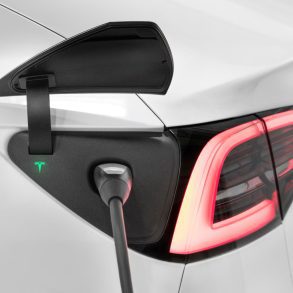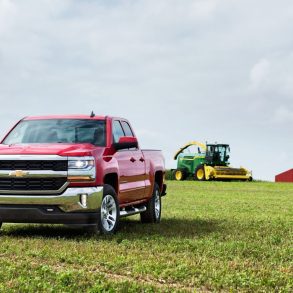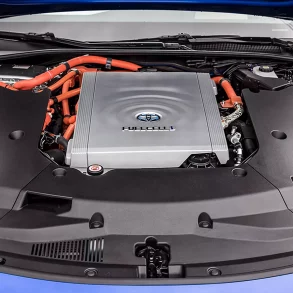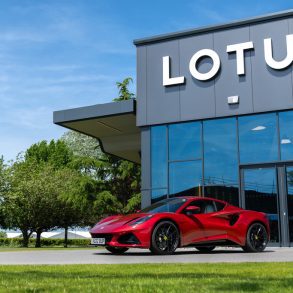Summary
- Sales volume is always a good sign a car is popular, but many large volume sellers don’t have huge profit margins on their cars
- Most of the major automakers make between 3% to 10% profit on each vehicle they sell
- In a bit of a strange coincidence, those carmakers that made double digit profit percentages in 2023 were almost all stuck between 11% and 12%
- Only two companies made more than 12% profit per unit sold
- We think that if Q1 2024 is any sign of the trends this year, some companies might be moving up over 12% profit per unit this year
It’s one thing to sell cars and lead volume, production, and delivery ratings. It is an entirely other thing to make money selling cars.
Being a popular or high volume brand does not necessarily mean that said brand is actually making money hand over fist. In fact, most automakers have very tight profit margins, often in the single digit percentages, and only make money by selling a literal ton of cars.
Yet, some brands make much more money than others whenever a car is sold, so we will analyze the 2023 profit margins today to see who actually makes the most money in the industry. Some of the results might just surprise you!
The Lower End
It might surprise you to know that despite delivering a stunning 4.4 million vehicles delivered globally, just under 50% of which were in the USA at 2.1 million units, Ford Motor Company had the tightest profit margins of 2023.
On the average, the blue oval made 3.1% profit per vehicle sold. They are the poster child for having mass volume but making little profit, but was still enough that they ended 2023 with $4.33 billion net income.
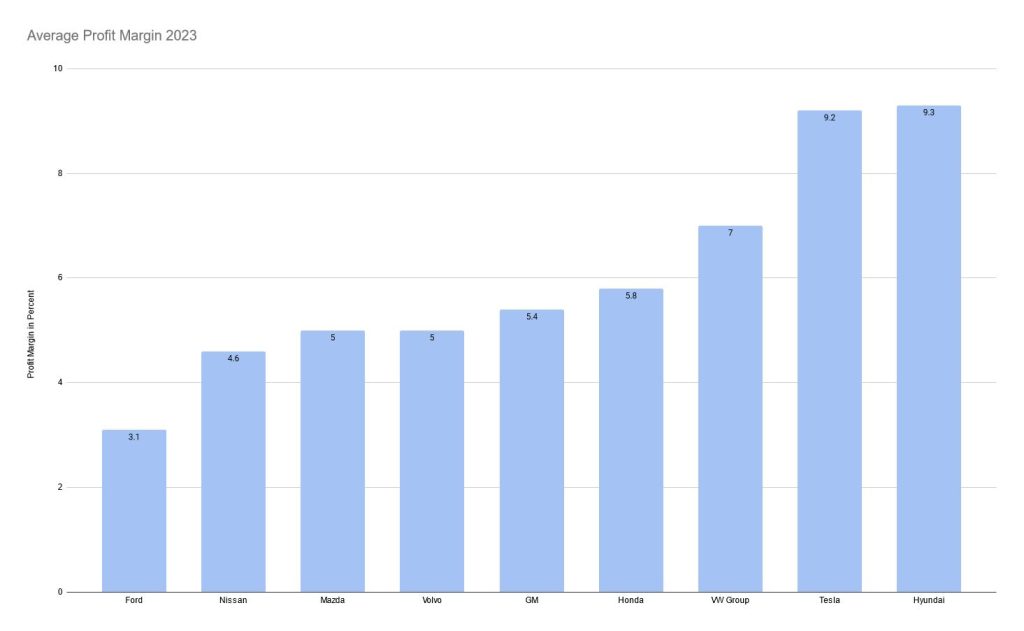
Other lower end brands in terms of 2023 profit margins were Nissan at 4.6% average, Mazda and Volvo both at 5.0% average, and General Motors at 5.4% average.
What may surprise many is that both Honda and the VW Group (Audi, Porsche, VW, Lamborghini, et al) as a whole earned only 5.8% and 7.0% average respectively. They were both beat out by Tesla at 9.2% and even Hyundai at 9.3%.
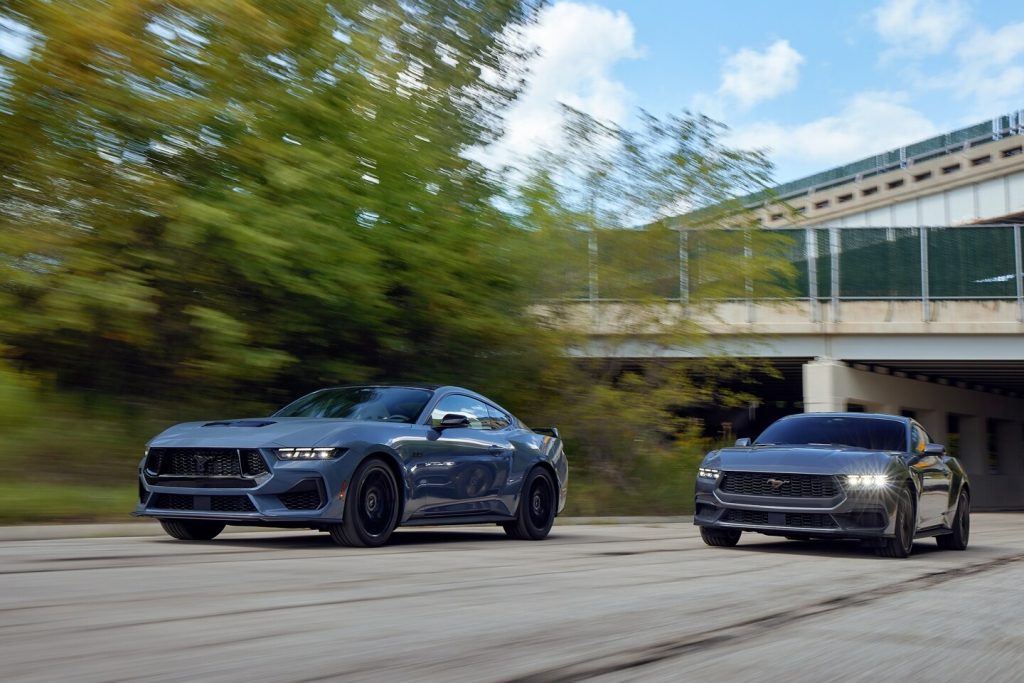
This is what we meant in the introduction that two out of the five top carmakers by volume, Honda and the VW Group, barely make any money off the cars they sell. However, because their cars are popular, they sell quite a few.
The 11% Group
The largest automaker by volume, Toyota, lands directly in the middle of the charts at 11.1% average profit per vehicle sold. Consider that they moved 11.2 million vehicles globally in 2023, and suddenly 11.1% average per vehicle translates into multiple billions of net income and profit.
Mercedes-Benz, including Mercedes-AMG and Smart, makes on average 11.4% profit on their vehicles. So, when someone last year bought an S-Class sedan, of which the lowest price is around $114,000, they were making just about $13,000 per car sold on the low end. Multiply that by the median of 924 S-Classes sold per month in 2023, and off that one car alone, they were pulling in $12.01 million per month ($144.1 million total for the year).
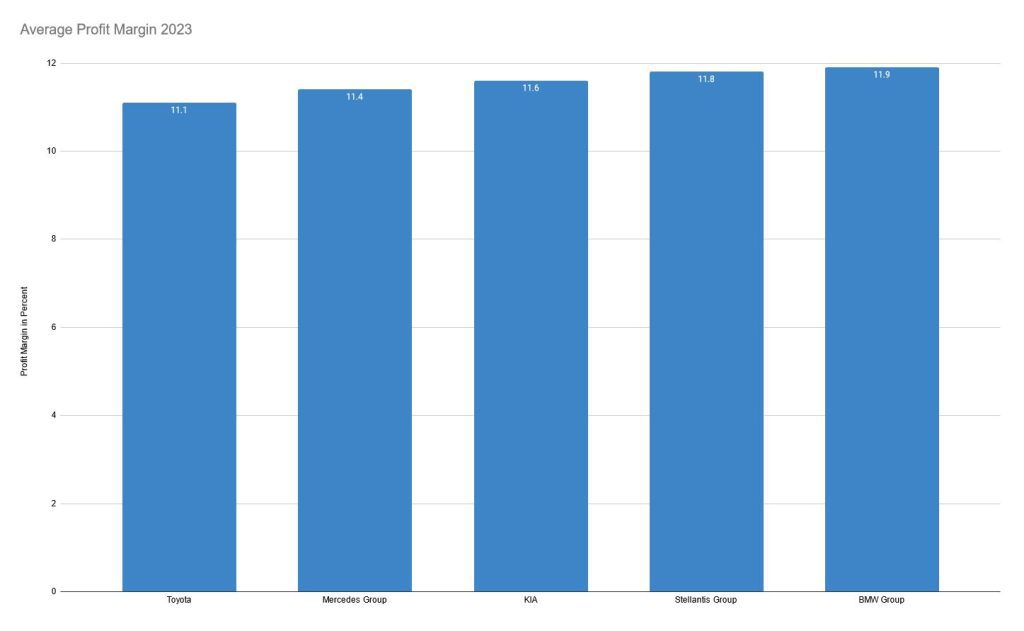
KIA came in at 11.6% average profit on their vehicles in 2023, which has helped them become one of the top value brands in the world. They are still a “small” carmaker compared to giants like Mercedes, VW, Ford, GM, and the like, but because they build their vehicles intelligently, and include a lot of features as standard that other brands offer as options, they have a very simple and clean sales funnel and can reap the profits.
The Stellantis Group (for the US, they own Alfa Romeo, Chrysler, Dodge, Fiat, Jeep, Maserati, and RAM Trucks) pulled in 11.8% average profit per vehicle sold. What is interesting for Stellantis is that this average profit includes fleet sales and special vehicles, such as Police Edition Dodge Chargers.
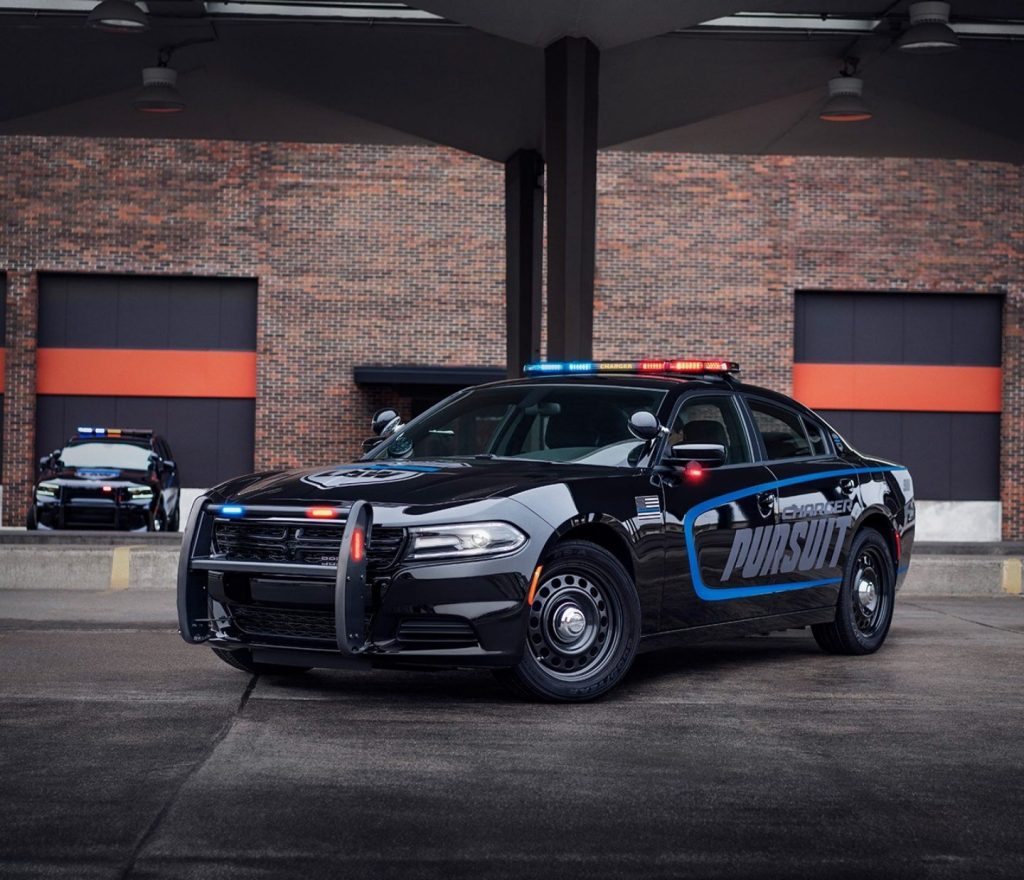
Topping out the 11% group is the BMW Group, which does include their powersports division of BMW Motorrad, coming in at 11.9% average profit. What impresses here is that as BMW is pushing electrification quite hard, and almost every vehicle is a hybrid or a full EV, they are one of the few companies that are seeing their EV range continuing to increase in sales.
The Top Earners
What you’ve all been waiting for, only two automakers in 2023 made better than 11% in profit. One made a lot of profit when divorced away from their ownership group, and the other is a fabled and long respected brand.
The first is Porsche, when viewed on its own away from the VW Group, who despite having a low volume of sales in comparison to many of the giants, made on average 18.0% profit on each car sold.
This includes one of the best selling EVs in the world, the Taycan, as well as their crossover vehicle, the Macan, selling almost double the units of the flagship Porsche car, the 911. Still, they only moved 320,221 cars in 2023
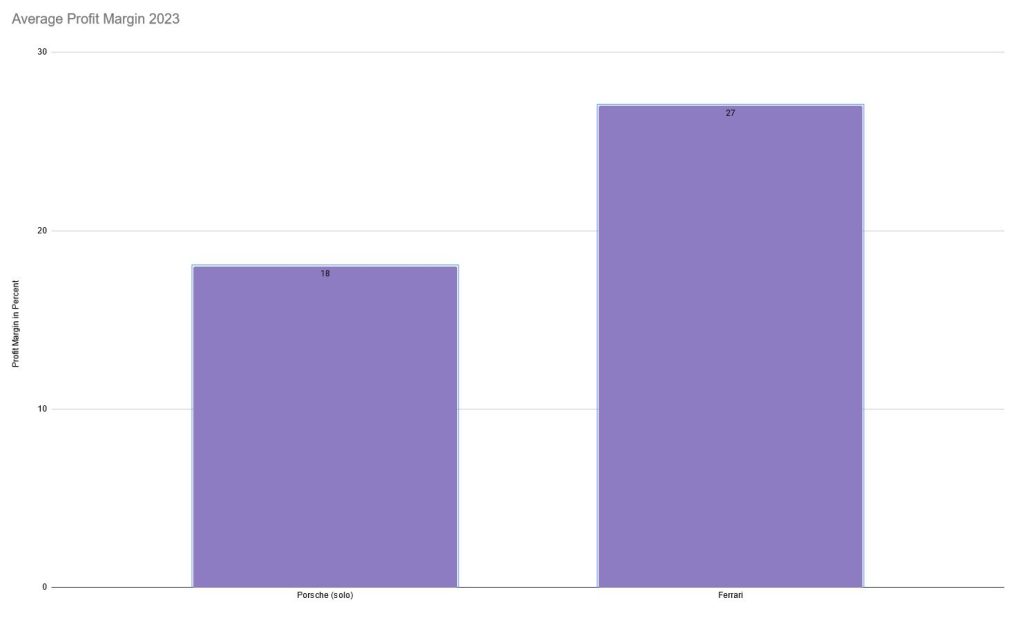
However, even Porsche pales in comparison to the most profitable brand of 2023: Ferrari.
The supercar maker with a history stretching back to the mid-20th century, is a boutique automaker that can still be considered “mass market” because they do sell quite a few cars. Discounting their hypercars and special editions, and based just on their primary supercars, the Prancing Horse made on average a whopping 27% profit on each vehicle sold.
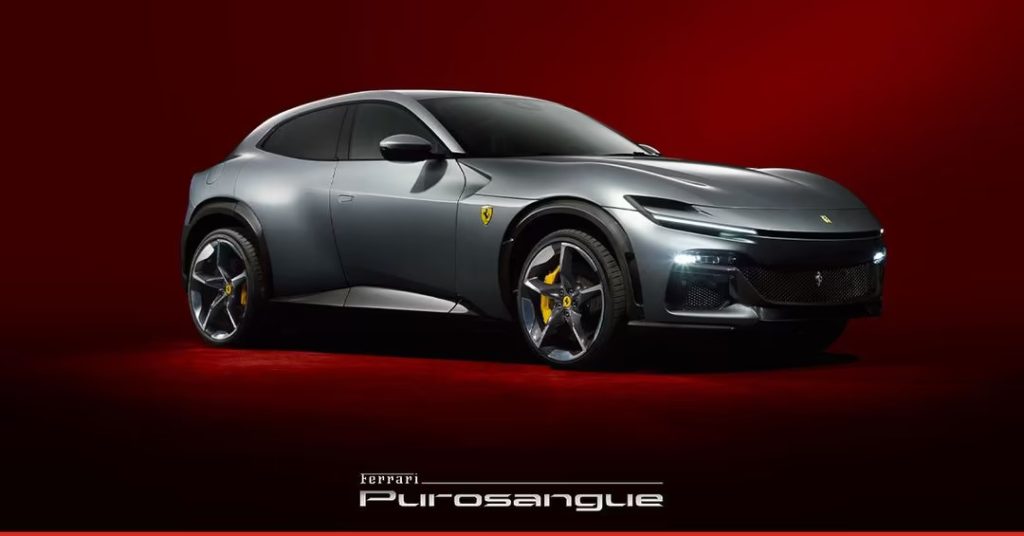
Much of this in 2023 was driven by the release of the 296 GTB/GTS supercar, and the long awaited Purosangue SUV. Even then, they still only sold 13,663 vehicles, but as the “cheapest” Ferrari, the Roma GT coupe, costs $227,481 base, each one sold netted the Scuderia $61,420.
Conclusions
It is pretty apparent to see that the two most profitable automakers are both what would be considered as specialist and/or boutique companies. The true mass market companies, the Hondas, Toyotas, VW Groups of the world, despite all their units sold, could not break through above 12% average profit.
In the grand analysis, this does make a lot of sense. To move millions of cars per year, you need to price them attractively and entice the customer to buy your car and not from the next dealership over. It is because of the sheer volume of cars moved that companies such as Ford almost always has “Employee Pricing” sales in August and September of each year to move older inventory off of dealership lots.
However, when you production is under 500,000 per year, which is true for almost every supercar and specialized sports car maker, you need to offset the volume with either brand recognition, such as Ferrari and its racing heritage, or offering the latest and greatest technology and luxury, such with Porsche and their push into eFuels, EVs, and hybridization.
We think that for 2024, things will likely remain the same, with a couple of companies maybe making it above 12%. Of the ones listed today, we think it’s most likely to be either KIA, due to their new models proving to be extremely popular, or Mercedes-Benz, as they have cut away a lot of extraneous trims from models that weren’t selling all too well.
Only time will tell, but with how Q1 went for many automakers, things are definitely looking good for 2024.


